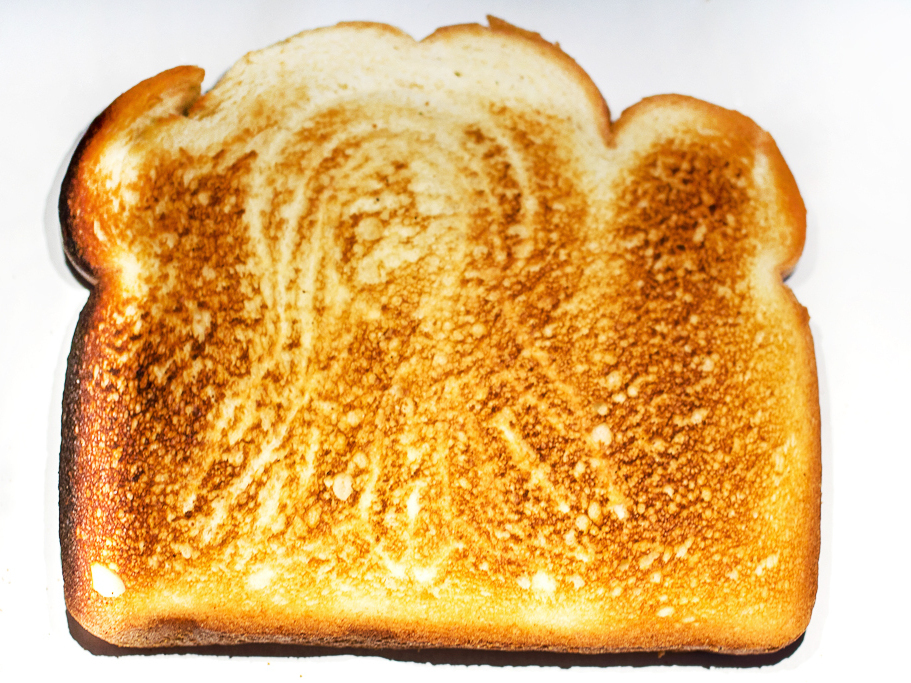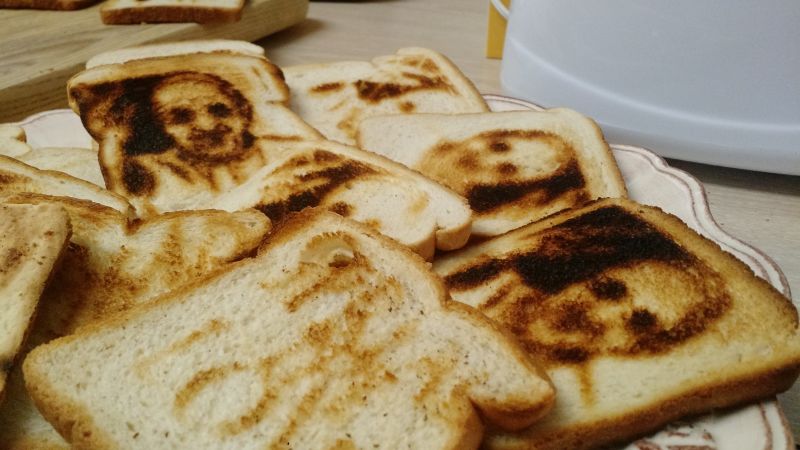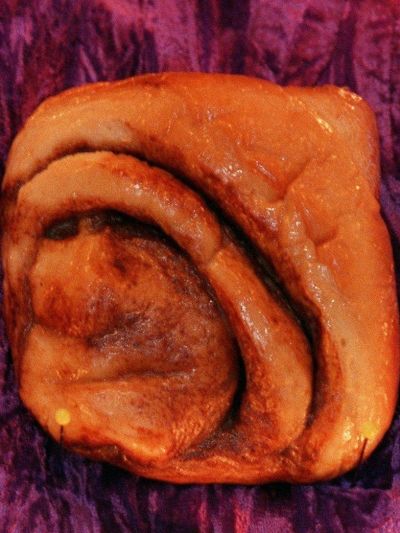The U.S. is in a frenzy over Pope Francis. And with the pontiff visiting Philadelphia on Saturday, vendors there are ready with commemorative memorabilia – including, as we've reported, a toaster that burns the pontiff's image onto bread.
That's all tongue in cheek, of course, but reports of people spotting religious figures in their food are very real. Plenty of people swear they've seen Jesus in a fish stick or the Virgin Mary on a slice of toast.
The phenomenon of discerning a clear image or pattern where it does not exist is known as pareidolia. And while you might be tempted to wonder what's wrong with folks who encounter such apparitions, it's perfectly normal for brains to perceive these illusory faces, explains Kang Lee, a developmental psychologist at the University of Toronto.
"It turns out that face pareidolia affects the parts of our brain that are responsive to real faces," Lee tells The Salt, adding, "In other words, if you are experiencing such a phenomenon, nothing is wrong with your brain."

Brain scans have shown that when we look at a face, a part of the brain called the fusiform face area lights up. But Lee and his colleagues have found that this area of the brain is also activated when people think they see faces that aren't there, they reported last year in the journal Cortex.

